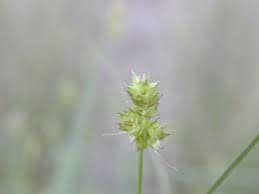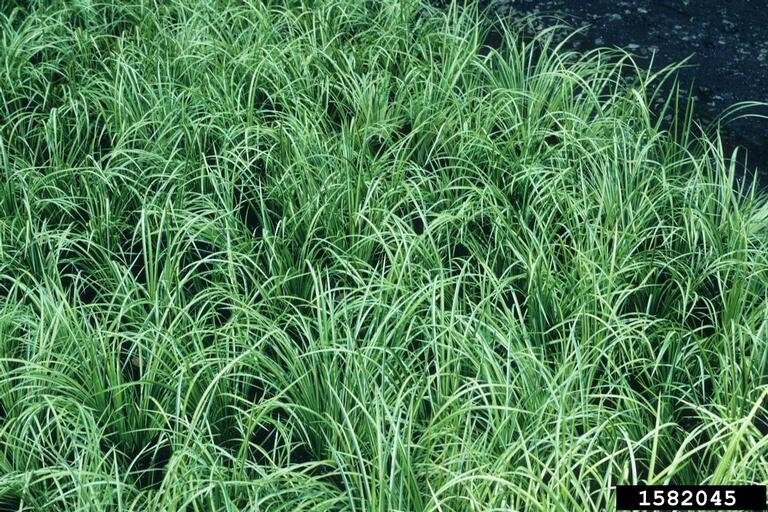 Image 1 of 3
Image 1 of 3

 Image 2 of 3
Image 2 of 3

 Image 3 of 3
Image 3 of 3




Webberville, Sand Sedge Live Plant Fully Rooted 1 Gallon Container Carex perdentata
$12.99
This plant is known as Sand Sedge or Webberville Sedge, and it can be used as an alternative to lawn. It is quite similar to Carex pansa and C. praegracilis, but its foliage is brighter green and coarser. Although it can tolerate drought, it won't remain as dense and lush without regular watering. It spreads slowly through runners but grows faster with regular water.
From the Image Gallery
1 photo(s) available in the Image Gallery
Plant Characteristics
Duration: Perennial
Habit: Grass/Grass-like
Root Type: Fibrous
Leaf Retention: Deciduous
Leaf Arrangement: Alternate
Leaf Complexity: Simple
Leaf Shape: Linear
Leaf Venation: Parallel
Breeding System: Flowers Unisexual , Monoecious
Inflorescence: Spike
Fruit Type: Achene
Size Notes: Up to about 3 feet tall.
Bloom Information
Bloom Color: White , Green , Brown , Not Applicable
Bloom Time: Mar , Apr , May
Bloom Notes: Perianth absent. Bloom time refers to fruiting period for Carex spp.
Growing Conditions
Light Requirement: Sun
Soil Moisture: Moist
Heat Tolerant: yes
Conditions Comments: This sedge tolerates a wide variety of soil types and conditions. It can be used as a grass substitute for low-traffic lawns.
Benefit
Conspicuous Flowers: yes
Interesting Foliage: yes
Deer Resistant: Moderate
From the Image Gallery
1 photo(s) available in the Image Gallery
Plant Characteristics
Duration: Perennial
Habit: Grass/Grass-like
Root Type: Fibrous
Leaf Retention: Deciduous
Leaf Arrangement: Alternate
Leaf Complexity: Simple
Leaf Shape: Linear
Leaf Venation: Parallel
Breeding System: Flowers Unisexual , Monoecious
Inflorescence: Spike
Fruit Type: Achene
Size Notes: Up to about 3 feet tall.
Bloom Information
Bloom Color: White , Green , Brown , Not Applicable
Bloom Time: Mar , Apr , May
Bloom Notes: Perianth absent. Bloom time refers to fruiting period for Carex spp.
Growing Conditions
Light Requirement: Sun
Soil Moisture: Moist
Heat Tolerant: yes
Conditions Comments: This sedge tolerates a wide variety of soil types and conditions. It can be used as a grass substitute for low-traffic lawns.
Benefit
Conspicuous Flowers: yes
Interesting Foliage: yes
Deer Resistant: Moderate
Quantity:
Add To Cart
This plant is known as Sand Sedge or Webberville Sedge, and it can be used as an alternative to lawn. It is quite similar to Carex pansa and C. praegracilis, but its foliage is brighter green and coarser. Although it can tolerate drought, it won't remain as dense and lush without regular watering. It spreads slowly through runners but grows faster with regular water.
From the Image Gallery
1 photo(s) available in the Image Gallery
Plant Characteristics
Duration: Perennial
Habit: Grass/Grass-like
Root Type: Fibrous
Leaf Retention: Deciduous
Leaf Arrangement: Alternate
Leaf Complexity: Simple
Leaf Shape: Linear
Leaf Venation: Parallel
Breeding System: Flowers Unisexual , Monoecious
Inflorescence: Spike
Fruit Type: Achene
Size Notes: Up to about 3 feet tall.
Bloom Information
Bloom Color: White , Green , Brown , Not Applicable
Bloom Time: Mar , Apr , May
Bloom Notes: Perianth absent. Bloom time refers to fruiting period for Carex spp.
Growing Conditions
Light Requirement: Sun
Soil Moisture: Moist
Heat Tolerant: yes
Conditions Comments: This sedge tolerates a wide variety of soil types and conditions. It can be used as a grass substitute for low-traffic lawns.
Benefit
Conspicuous Flowers: yes
Interesting Foliage: yes
Deer Resistant: Moderate
From the Image Gallery
1 photo(s) available in the Image Gallery
Plant Characteristics
Duration: Perennial
Habit: Grass/Grass-like
Root Type: Fibrous
Leaf Retention: Deciduous
Leaf Arrangement: Alternate
Leaf Complexity: Simple
Leaf Shape: Linear
Leaf Venation: Parallel
Breeding System: Flowers Unisexual , Monoecious
Inflorescence: Spike
Fruit Type: Achene
Size Notes: Up to about 3 feet tall.
Bloom Information
Bloom Color: White , Green , Brown , Not Applicable
Bloom Time: Mar , Apr , May
Bloom Notes: Perianth absent. Bloom time refers to fruiting period for Carex spp.
Growing Conditions
Light Requirement: Sun
Soil Moisture: Moist
Heat Tolerant: yes
Conditions Comments: This sedge tolerates a wide variety of soil types and conditions. It can be used as a grass substitute for low-traffic lawns.
Benefit
Conspicuous Flowers: yes
Interesting Foliage: yes
Deer Resistant: Moderate
This plant is known as Sand Sedge or Webberville Sedge, and it can be used as an alternative to lawn. It is quite similar to Carex pansa and C. praegracilis, but its foliage is brighter green and coarser. Although it can tolerate drought, it won't remain as dense and lush without regular watering. It spreads slowly through runners but grows faster with regular water.
From the Image Gallery
1 photo(s) available in the Image Gallery
Plant Characteristics
Duration: Perennial
Habit: Grass/Grass-like
Root Type: Fibrous
Leaf Retention: Deciduous
Leaf Arrangement: Alternate
Leaf Complexity: Simple
Leaf Shape: Linear
Leaf Venation: Parallel
Breeding System: Flowers Unisexual , Monoecious
Inflorescence: Spike
Fruit Type: Achene
Size Notes: Up to about 3 feet tall.
Bloom Information
Bloom Color: White , Green , Brown , Not Applicable
Bloom Time: Mar , Apr , May
Bloom Notes: Perianth absent. Bloom time refers to fruiting period for Carex spp.
Growing Conditions
Light Requirement: Sun
Soil Moisture: Moist
Heat Tolerant: yes
Conditions Comments: This sedge tolerates a wide variety of soil types and conditions. It can be used as a grass substitute for low-traffic lawns.
Benefit
Conspicuous Flowers: yes
Interesting Foliage: yes
Deer Resistant: Moderate
From the Image Gallery
1 photo(s) available in the Image Gallery
Plant Characteristics
Duration: Perennial
Habit: Grass/Grass-like
Root Type: Fibrous
Leaf Retention: Deciduous
Leaf Arrangement: Alternate
Leaf Complexity: Simple
Leaf Shape: Linear
Leaf Venation: Parallel
Breeding System: Flowers Unisexual , Monoecious
Inflorescence: Spike
Fruit Type: Achene
Size Notes: Up to about 3 feet tall.
Bloom Information
Bloom Color: White , Green , Brown , Not Applicable
Bloom Time: Mar , Apr , May
Bloom Notes: Perianth absent. Bloom time refers to fruiting period for Carex spp.
Growing Conditions
Light Requirement: Sun
Soil Moisture: Moist
Heat Tolerant: yes
Conditions Comments: This sedge tolerates a wide variety of soil types and conditions. It can be used as a grass substitute for low-traffic lawns.
Benefit
Conspicuous Flowers: yes
Interesting Foliage: yes
Deer Resistant: Moderate